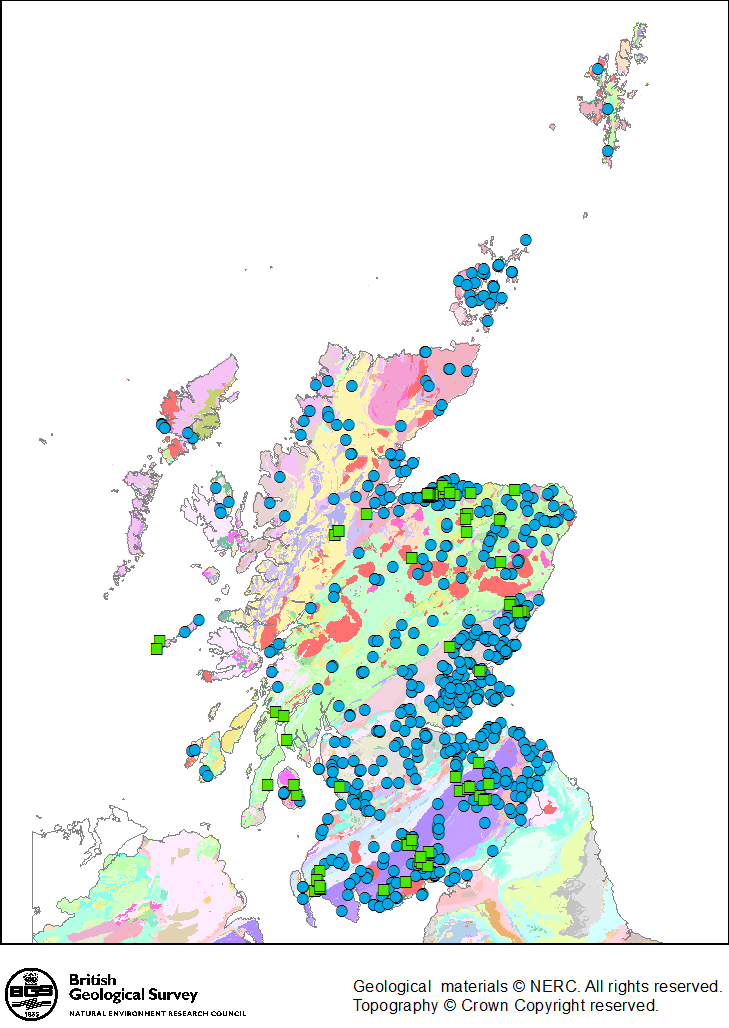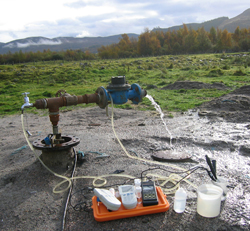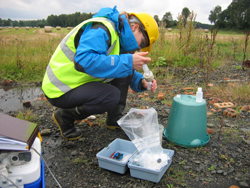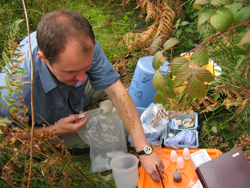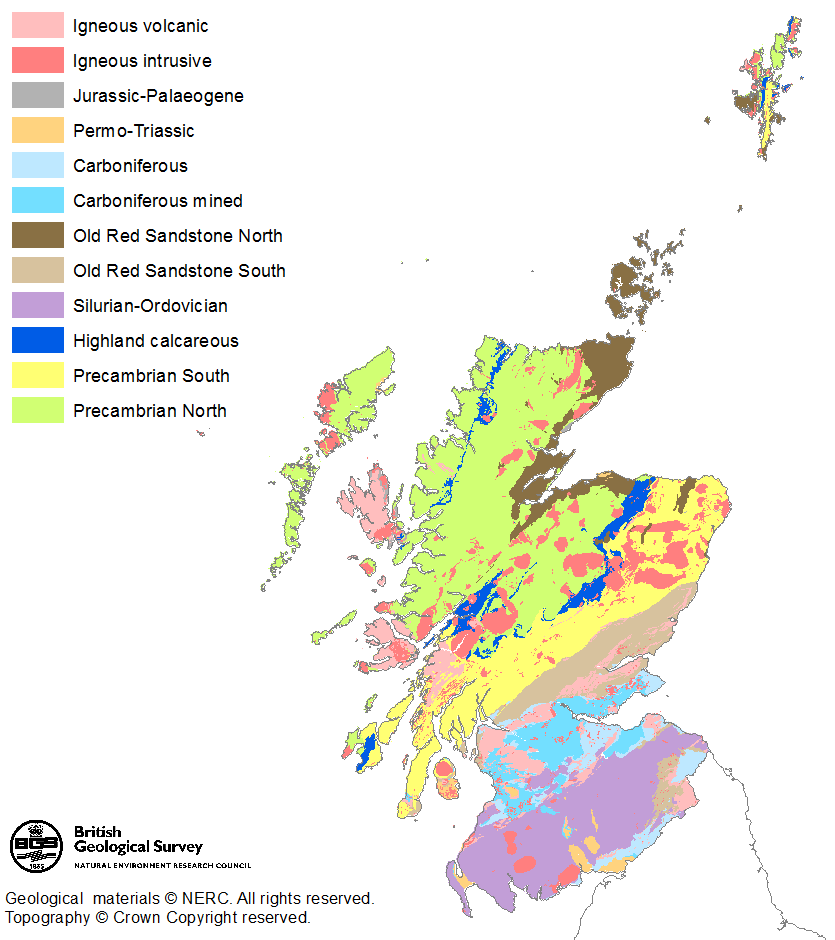Baseline Scotland: groundwater chemistry data
Collecting new data on groundwater chemistry in Scotland to provide a scientific foundation to Scottish, UK and European water quality policy.
About Baseline Scotland

Baseline Scotland is a joint project between BGS and SEPA which is providing new groundwater chemistry data for Scotland. This new data provides essential information to sustainably manage Scotland’s water environment, as required by Scottish, UK and European water legislation, (such as the Water Framework Directive). Before Baseline Scotland very little reliable groundwater chemistry data existed, particularly for trace elements.
Systematic groundwater sampling surveys were carried out across all the major bedrock aquifers in Scotland between 2005 and 2011, as well as many superficial aquifers. Standardised sampling techniques were used to characterise the groundwater chemistry in detail and investigate how long since groundwater was recharged from rainfall; how groundwater has interacted with the aquifer rocks; and whether there is any groundwater pollution. The results from most parts of Scotland have already been reported in detailed reports. Summary results for each major aquifer group in Scotland are presented in Scotland’s Aquifers and Groundwater Bodies (2015). Detailed results for the final areas, and a detailed overview of the baseline groundwater chemistry of Scotland, will be reported soon.
The aims of Baseline Scotland are:
- To characterise the natural background groundwater quality in the main aquifers of Scotland, by carrying out new detailed groundwater chemistry sampling.
- To provide a scientific foundation to Scottish, UK and European water quality policy and groundwater management and protection, with an emphasis on the protection and sustainable development of high quality groundwater
Outputs
- Summarised groundwater chemistry data for major bedrock aquifers in Scotland.
Spatial coverage of groundwater chemistry data: Scotland
Before the Baseline Scotland project began there was little information on natural groundwater chemistry in Scotland. Existing data was mainly old, of variable quality, limited (often to a few major ions only), and skewed to areas of groundwater contamination, particularly related to mining, and to the more productive Scottish aquifers, in particular the Devonian aquifers of Fife, Strathmore and Morayshire, and the Permian aquifer in Dumfries. Since the start of the Baseline Scotland project, 268 new groundwater samples have been collected from aquifers across Scotland. A further 479 samples collected during other projects since 2001, using equally rigorous sampling techniques to the Baseline samples, have been incorporated into the Baseline dataset.
Baseline sampling
The Baseline sampling surveys collected new data on groundwater chemistry, stable isotopes and residence times. Rigorous well head measurements (of parameters including dissolved oxygen, redox potential, SEC and bicarbonate) were combined with collecting samples for analysis of major, minor and trace ions; stable isotopes (δH2, δ18O and δ13C); dissolved organic carbon; and where possible, CFC (chlorofluorocarbon), SF6 (sulphur hexafluoride), and other dissolved gases such as CH4 (methane).
Baseline Scotland data
Twelve major bedrock aquifer units have been defined across Scotland, which have distinctly different controls on baseline groundwater chemistry – largely related to geological age and rock type. The baseline groundwater chemistry of each of these aquifer units is reported separately. Click on the data links below to view summaries of baseline groundwater chemistry data already reported for Scotland.
Baseline Scotland data summaries
- Aberdeenshire data
- Midland Valley data
- Moray Firth data
- Southern Scotland data
- Strathmore data
- Manganese in Scottish Groundwater
A summary of the baseline groundwater chemistry in each major bedrock aquifer in Scotland is presented in Scotland’s Aquifers and Groundwater Bodies.
Contact
Contact Brighid Ó Dochartaigh for further information.

